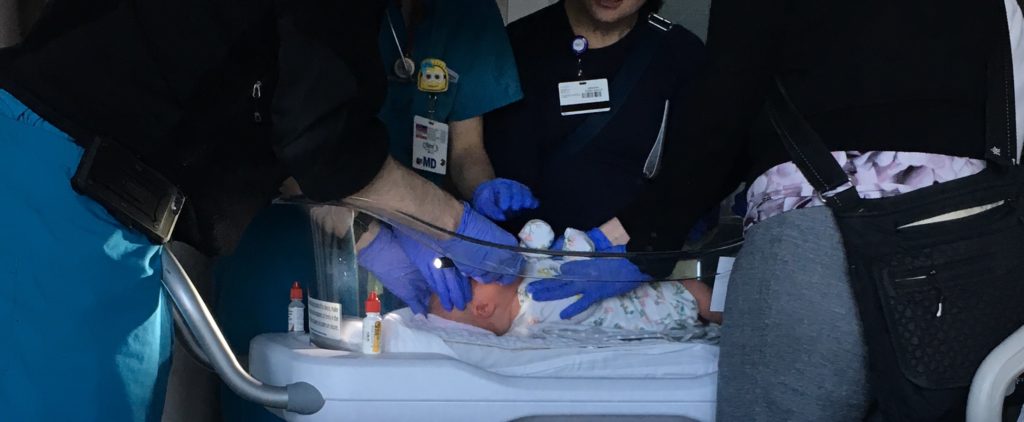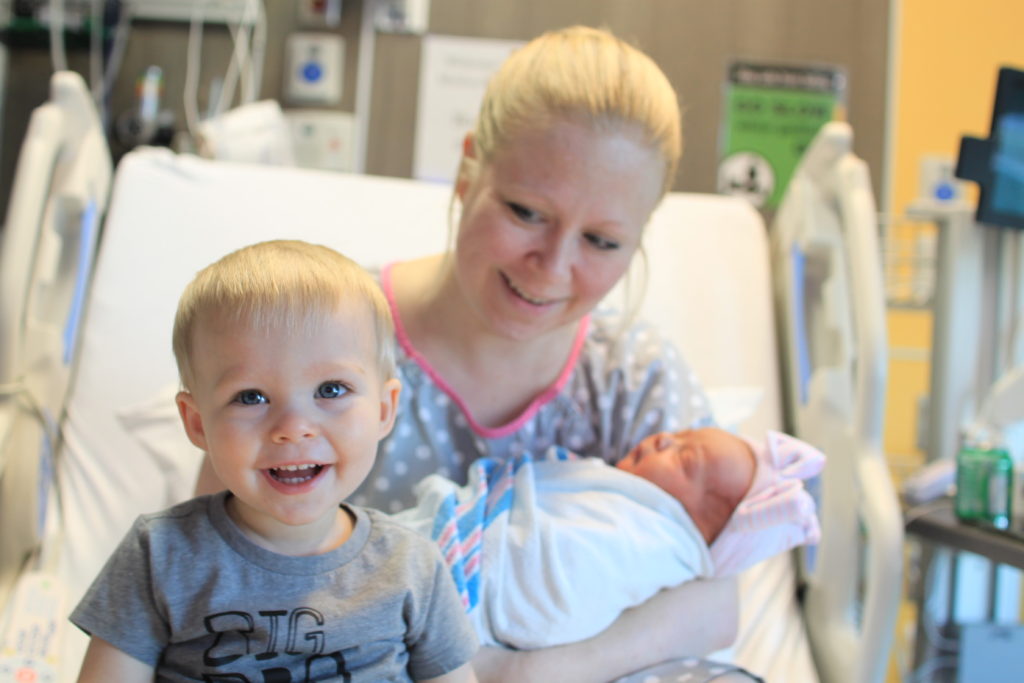I want to say that our birth was significantly different because we had a baby who had been diagnosed with Agenesis of the Corpus Callosum, but for us, there wasn't much to be said. I cannot say this is the case for others, but the one thing that holds true with an ACC kid is that you have to wait and see.
The 'wait and see' game is something that is really common with a diagnosis like Agenesis of the Corpus Callosum. You received an initial suspicion of a problem, and you have to 'wait and see' for the next doctor or a specialists. You get a confirmation of a diagnosis only for the doctors to order more tests to try and find out the reason why it happened in the first place. After any test, you typically have to 'wait and see' for the results on another day or through another doctor. You have to 'wait and see' how the results are read or 'wait and see' about the research around a specific concern the doctors have.
The remainder of our pregnancy after our journey began was a 'wait and see'. She may be "normal". She may have large concerns. She may act, look, and feel neurotypical but just 'wait and see' as she develops or progresses. They could not necessarily predict for me how the labor or the delivery experience would go for us.
I was 10 days past my due date with my first son, so Lillie was past my due date as well, we knew that we would probably have to have some intervention to help bring her to the world. We agreed with Lillie to induce at 41 weeks and went into the hospital the night before I hit the 41 week mark.
It was the Wednesday night before Easter weekend and we were nervous and excited like most soon-to-be parents are. Even though we had experienced a birth prior to Lillie joining our family, this time was different at a new hospital, with new doctors including speciality doctors and NICU on watch, and more 'wait and see' anxieties as we await to see our little girl.
Labor itself was overall not dramatic until the end, which honestly was the same way with my neurotypical son. The birth with my son, Ollie, ended with labor halting in progression, a fast jolt of Pitocin to keep me moving along, a high risk of infection for both my son and myself for extended time of my water being broken, and a vacuum-assisted vaginal delivery to avoid a Cesarean birth. Similarly, Lillie was anti-climatic until the end.
I started my evening with a small dose of Pitocin to have my body respond really well. I responded so well that the doctors felt that I was progressing quicker than anticipated which would have left me to deliver overnight, exhausted, and without many of the speciality doctors that we had planned to be bedside. So they paused the medication to help slow down my labor and get me through the night. Similarly to what happened with Ollie, the progression of my labor went to nearly a full halt. The following morning they started having discussions about alternative birthing options (C-section) and I asked for more Pitocin again. It worked and my labor kicked into high gear.
Some where along the way later that morning, the doctors discovered that Lillie had her cord wrapped around her neck two times and they started getting really serious about getting her out quick. A few pushes shortly after lunch time and she entered the world as happy and healthy as could be.
While a halting in progression and a cord wrapped around her neck was stressful, her birth had very little to do with her diagnosis. The biggest difference for us was the amount of people in the room. As little was born, she was instantly whisked away to a team of doctors and nurses. It was nearly 30 minutes (and felt like forever) before I was able to hold her without a doctor or somebody running a small test here or there.

There was instant conversations about MRI scans and simulation testing to see how her body would respond to things like infection and sickness. While we knew some of this would happen, and it was one of the reasons we chose to be at the hospital we were at, I did not expect for it to occur within sheer moments of her birth. From ensuring her umbilical cord was saved for genetic testing to getting her to another floor for a post-birth MRI scan to confirm her diagnosis once again, there was a lot of testing and then so much more 'wait and see'.
It was sort of a surreal time. She felt so perfect. Our anxieties nearly faded away. And yet, doctor after doctor reminded us to 'wait and see'.
We are super thankful to have many great doctors in our St. Louis area and such a healthy labor and delivery; however, that 'wait and see' started to define us as parents. Through her pregnancy to her birth and into her first few years, the 'wait and see' was the new normal.








